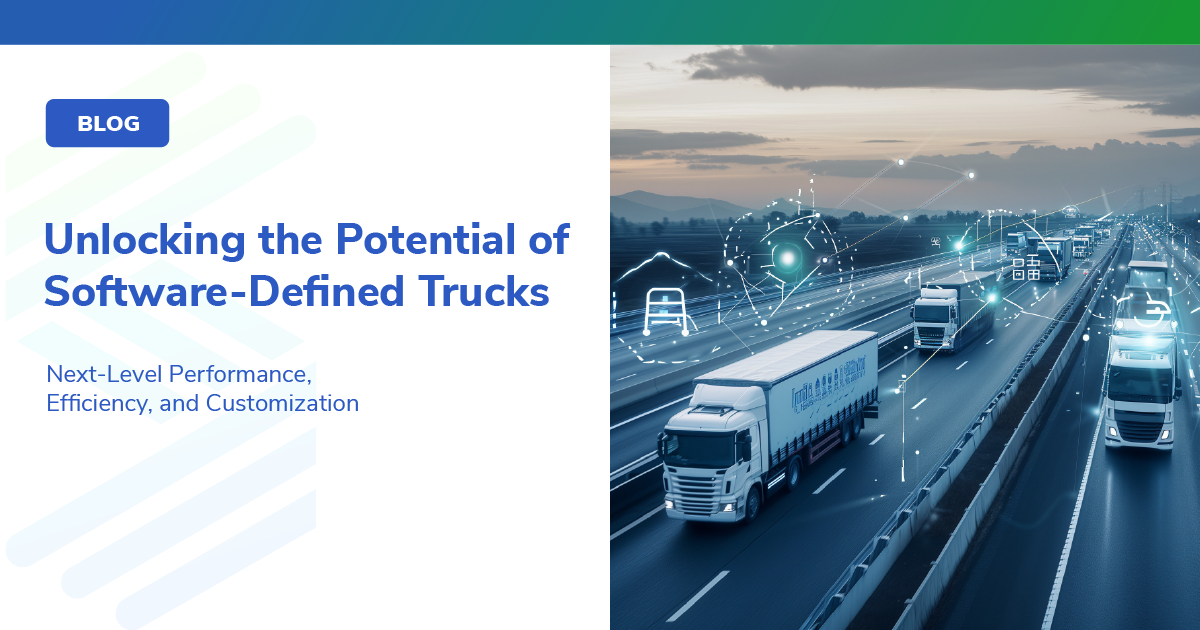
/
February 1, 2022
/
#
Min Read
The Upside of Leveraging Embedded Connectivity for UBI
We are back with Part II of our three-part series on Usage Based Insurance (UBI) and Connected Cars. Last time we explored how Vehicle-Generated Data Through UBI can be used to benefit all parties involved, including OEMs, insurers, and consumers. In addition to enhanced convenience and safety features, there is tangible financial gain as well.
Revenue streams for vehicle-generated data are forecasted to experience astronomical growth in the near future. The global automotive UBI market alone is estimated to reach a value of 105.12 billion dollars by 2027. That’s a CAGR of 23.61% from its 2018 value of 15.6 billion dollars. Unfortunately, not all UBI solutions are created equal. To maximize financial gain, OEMs need to look beyond traditional UBI product offerings. In this article we will critically examine different UBI options and explain how an embedded telematics-based approach can overcome their limitations.
Traditional UBI Product Offerings
There are three traditional product offerings for UBI: smartphone applications, OBD-II hardware, and “tags.” These all function by gathering telematics data such as speeding, acceleration, braking, miles driven, time of day, and phone use while driving. This data is then utilized to gain insights on driver habits which in turn impact auto-insurance rates. These UBI solutions vary in both cost and accuracy.
OBD-II Hardware
The on-board diagnostic (OBD) system provides access to key information regarding various vehicle systems and functions. Attaching an external device via the OBD port gives auto insurers the ability to collect data and assess safe driving habits. Although OBD-II hardware has access to accurate data drawn directly from the Engine Control Module (ECM), it has its downsides.
OBD-II devices are limited to data housed in the ECM, while data from other vehicle components remains inaccessible. In addition, the installations costs and effort are quite expensive. As a result, most insurers choose to install the hardware for an evaluation phase only. The upside is they can reuse the equipment and spread the overall cost among their users. The downside is this introduces the possibility of data bias. During the evaluation period, drivers are incentivizing with the prospect of lower insurance rates, but once the hardware is removed there is nothing to keep them accountable. As bad habits return, roadside collisions increase, and insurance companies are left paying the price.
Mobile Applications
Compared to OBD-II hardware, smartphone applications are a cost-effective way to track driver habits and determine unbiased premiums. A range of existing mobile applications provides insurers with a simple means of launching their own telematics-based program. While OBD-II hardware is limited to data from one vehicle, smartphone applications collect data every time the user is driving, regardless of the vehicle. Another benefit is long-term data collection, which allows the auto-insurer to reduce or increase premiums based on customer behavior over time.
Mobile UBI applications are not without flaws. Since the software does not connect directly with the vehicle’s systems, data points are subject to a margin of error, especially when driving at lower speeds. Consequently, insurers may be unable to accurately assess the risks associated with their clients. Another issue is the portability of the UBI device. A driver may choose to leave their phone at home or turn off tracking when they plan to “bend” a few safe driver habits. Or, should a driver forgets to turn off tracking when someone else is behind the wheel, their insurance rates might be impacted by the other driver’s behaviors.
Tags
A “tag” is a device that is installed on the windshield or rear window of a vehicle. It works with a smartphone to track driver habits and behaviors over extended periods of time. By working via Bluetooth, it only collects data associated with the person whose phone is connected to the tag at the time. If a new driver takes the wheel, they can connect their device to the tag, in the same way they would to the car’s infotainment system.
Like mobile applications, tags have no direct link to the vehicle’s systems and are therefore subject to error. The costs associated with tags fall between OBD-II hardware and smartphone options. However, costs can increase if the device needs to be replaced due to malfunction, failure, or being misplaced.
Embedded Telematics: Offerings and Benefits
Embedded telematics is a dynamic data collection solution that solves most of the problems associated with other UBI products. By drawing data directly from the vehicle’s electronic control units (ECUs) it is more reliable and accurate than any other UBI method currently available. With embedded telematics, users have access to vehicle-wide data collection, including unique and novel data points. Not only are insurers provided with a more comprehensive risk assessment of their customers but also the ability to offer pricing based on a wider range of parameters. Embedded telematics data lets them look at anything from seat belt usage to mirror adjustments, gear shifting habits, and turn-signal usage.
Embedded telematics is a highly configurable solution that allows for the creation of condition-based scenarios or event triggers. For example, an insurance company may create a parameter that notifies them if a driver adjusts their seat at any speed over 60mph. With all this data it is a wonder that insurers will be able to keep track of it all. Fortunately, embedded technology lowers bandwidth requirements with edge computing. This process filters data before uploading it to the cloud and decreasing the costs associated with cloud storage.
Leverage Connectivity with Sibros
Although over twenty-five insurance companies already offer UBI, many of them utilize traditional solutions, leaving themselves vulnerable to inaccurate data and an incomplete picture of driver habits.
Sibros Deep Connected Platform (DCP) is an embedded telematics UBI solution that offers a complete picture. It collects high-quality connected vehicle data in the right format at the right time. Sibros’ solution has vehicle-wide integration which accesses data from every ECU in the vehicle. It also reduces vehicle-to-cloud cellular, computing, and storage costs by up to 60%. This provides OEMs with a simple, easy, effective means of monetizing their data. In addition, Sibros’ OTA Deep Logger helps auto insurers improve risk prediction through the analysis of relevant data based on changeable parameters and unique variables.
Are you ready to maximize vehicle-generated data revenue and overcome UBI limitations? Schedule a demo with Sibros to learn how DCP can help you turn data into dollars.













